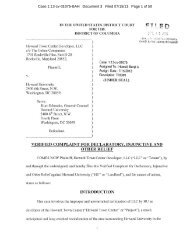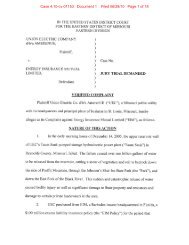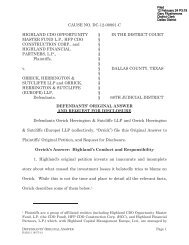UNITED STATES DISTRICT COURT NORTHERN ... - Bizjournals
UNITED STATES DISTRICT COURT NORTHERN ... - Bizjournals
UNITED STATES DISTRICT COURT NORTHERN ... - Bizjournals
Create successful ePaper yourself
Turn your PDF publications into a flip-book with our unique Google optimized e-Paper software.
Case 1:13-cv-03241-AT Document 1 Filed 09/30/13 Page 37 of 64features three beluga whale summer aggregations, one in the Sakhalin-Amurregion, one in the adjacent Shantar region (comprised of four bays), and one in theShelikov region. The Shelikov population is distinct from the other two and, basedon existing data and geographic considerations, should not be considered part ofthe Shantar and Sakhalin-Amur aggregations. However, data on migrationpatterns, data regarding the mixing during the breeding season of whales from thegroups that summer in the Shantar and Sakhalin-Amur areas, and genetic analysesall show that the Shantar and Sakhalin-Amur populations are related and should beconsidered as one group for calculating PBR.73. As to genetic analysis, data for 19 microsatellite loci (i.e., nuclearDNA inherited from both parents) indicate the beluga whales in the Shantar regionand the whales in the Sakhalin-Amur region are not genetically differentiated butinstead belong to one genetically homogeneous population. The mitochondrialDNA (“mtDNA”) (i.e., a small part of the cellular DNA usually inherited onlyfrom the mother) data indicate female belugas have a degree of fidelity to specificsummering areas, but it is not absolute and mtDNA is shared by belugas in thedifferent summering areas. The genetic data, particularly for microsatellite loci,indicate there is considerable interbreeding of the animals in all areas in theShantar and Sakhalin-Amur regions over time. The combined microsatellite and37
















